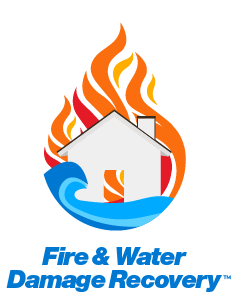Dry Star Restoration for Dummies
Table of ContentsThe Basic Principles Of Dry Star Restoration Not known Facts About Dry Star RestorationHow Dry Star Restoration can Save You Time, Stress, and Money.How Dry Star Restoration can Save You Time, Stress, and Money.The 7-Minute Rule for Dry Star Restoration
Specifically in wintertime, home heating units are a common fire risk. Faulty electrical wiring or placing heating systems as well close to flammable materials like curtains can stir up a fire.
Statistics: According to the National Fire Defense Association, house chemicals are accountable for a notable percent of home fires each year. By knowing these usual causes, you can take actions to make your home much safer.
Unknown Facts About Dry Star Restoration

Trick issues include: Water Invasion: Water can seep into wall surfaces, floorings, and furniture. This can weaken the architectural stability of your home. Mold Development: If water is not dried promptly, mold can begin to grow within 24-48 hours. Mold and mildew can trigger health concerns and additional damages to your residential or commercial property. Architectural Weakening: Water can deteriorate wood structures and create steel parts to corrosion, making your home harmful.
It's essential to resolve all these aspects to completely recover your home. Next, we will study the actions associated with the fire damages remediation procedure. Fire remediation is the process of cleansing, repairing, and bring back a building that has been harmed by fire. The goal is to return the home to its pre-loss condition, meaning it looks and works as it did prior to the fire.
Some Known Questions About Dry Star Restoration.
Debris Elimination and Demolition: Damaged products are safely removed, and any kind of dangerous materials like asbestos are taken care of properly. Fire damage encompasses a number of kinds of damage to a residential or commercial property: Physical Damages: This consists of charring, blackening, and disintegration of products straight impacted by the fire.
Water Damage: Water made use of to extinguish the fire can bring about structural weakening and mold growth otherwise effectively handled. Fire remediation specialists make use of specialized strategies and tools to attend to all these kinds of damages, ensuring the home is risk-free and livable once again. Next off, we will study the steps associated with the fire damages reconstruction procedure.
From state-of-the-art water removal tools to specialized devices for smoke and residue elimination, we have actually the resources required to restore your home to its pre-loss problem. Our methods are developed to be complete and efficient, reducing additional damage and accelerating the recuperation process. Our group includes certified service technicians that are professionals in fire damages repair.
About Dry Star Restoration
Their experience makes certain that every job is done right, providing you with satisfaction during a hard time. If you require fire damage repair services, don't wait to call us. We're right here to help you restore your home and your life after the fire. Last modified on 15th of July 2024.
(https://www.dreamstime.com/ashleykahle_info)If there's a fire, smoke makes sure to adhere to. While the fire's smoke is made up of aspects that make your home hazardous to be in, the damages smoke leaves doesn't quit there. Smoke will certainly float to seemingly every component of your home, staying with furniture, style, drapes, walls, ceilings, floorings, and much more.
The water will certainly soak right into the charred materials and infected other locations of the home unaffected by the fire. If left untreated or missed throughout fire damage reconstruction, the water damage will just worsen with time and can bring about mold development, safety concerns for your home's structure, and unattractive appearances around your room, including deformed flooring, peeling paint, and noticeable spots.
Unknown Facts About Dry Star Restoration
Water mitigation is typically the very first step of the fire, smoke, and water damages restoration process after a damage control has actually been finished. This attends to the water damages head-on and consists of steps to avoid more problems for your area prior to, during, and after reconstruction. Inspection and damages analysis to assess internet the level of water damageIsolation of water damages to influenced locations to prohibit water from infecting completely dry areasInspection of your home's structure for structural stabilityExtraction of any type of standing water from the propertyStructural drying with commercial-grade equipmentSite cleaning that will certainly remove debris, pack out salvageable content for restoration, and make method for repair servicesWe'll also complete additional damage reduction by boarding up busted home windows and doors, using tarps to holes in roofing systems, and completing other actions to avoid additional damages and hazards to your home while the fixings are occurring.
The majority of terms and summaries utilized by water and fire damage restoration professionals are fairly obvious. Nonetheless, the listing of terms below should be of aid when you're connecting with the business you've hired. Any kind of activity required to avoid the growth and dispersing of fungus, mold and mildew, mildew, and spores. This can include making use of solvents or chemicals as ingredients or barriers on structure products to stop fungus development.